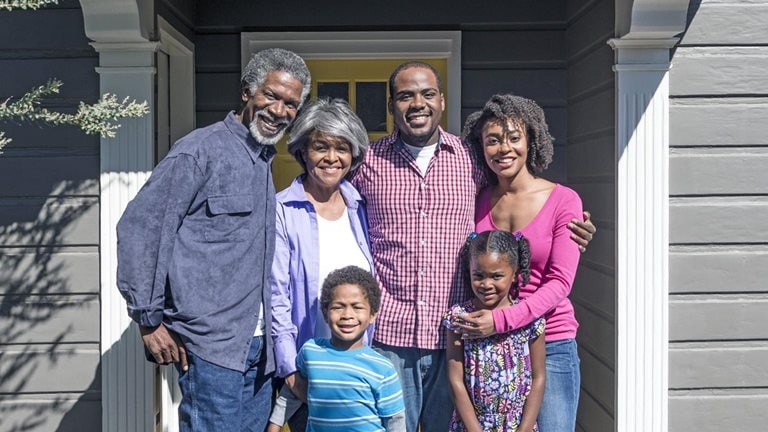 | | | |
ON BLACK AMERICANS’ PROSPERITY
Enabling prosperity for Black Americans—no matter where they live
| | | | | | | | | | | |
| When we started the McKinsey Institute for Black Economic Mobility in 2020, one of our first reports was The economic state of Black America: What is and what could be. The report examined challenges and opportunities for Black Americans in five different roles that they play in the economy: workers, business owners, savers and investors, consumers, and residents. Since then, we have been going deep into each of these roles. In 2021, we looked at Black consumers. This year, we’re focusing on Black residents.
Black Americans’ opportunities and outcomes vary significantly in different places. When you look nationally at only things like life expectancy and the poverty rate, you can miss quite a bit of nuance and detail. If you really want to understand what’s happening, you have to look at the issue of place as well. Black Americans, for example, are more likely than most of the US population to be concentrated in major cities. But when you look at the places where Black Americans are doing the best, it’s in the suburbs and exurbs. However, these are the very places where you’re least likely to find Black Americans.
What’s interesting in these US suburbs and exurbs is that while Black residents are doing great relative to Black Americans across the nation, if you compare them with their White neighbors, they’re doing only about 65 percent as well. There’s still a significant racial wealth gap. Black Americans today are much more prosperous than they were ten years ago: about 75 percent of US counties have seen improvements in overall Black prosperity. But in many places, White Americans’ outcomes have been improving at a faster rate than their Black neighbors.
The question is, how do we build a set of solutions that can improve Black Americans’ outcomes? There is effectively no place in the country where Black residents are doing as well as their White neighbors are. In fact, there are only a few places in the United States where Black people’s outcomes are at or above 90 percent of their White neighbors’. One is Paulding County, a suburb outside of Atlanta; several other counties with large Black populations outside of Atlanta, Houston, and Washington, DC, also are doing relatively well on parity. But most other places with higher parity are small, rural communities, so we’re talking about small populations in places where residents of all races tend to be less well off.
| | |
| | | “To address the nationwide disparity, we need an all-hands-on-deck approach in which many solutions are operating at scale for a long time.” | | | | |
| There’s no easy answer for how to address the nationwide disparity. Instead, we need an all-hands-on-deck approach in which many solutions are operating at scale for a long time. There are certain areas for investment that can deliver broad, downstream effects. Affordable housing, for example, is linked to improved physical and mental health, economic opportunity, and other measures of prosperity. Early-childhood education also has been shown to yield significant impact—and not just on the individual who is receiving the childcare. Because quality childcare improves parents’ ability to find meaningful work, it improves an entire family’s long-term economic outlook. Investing in early-childhood education also benefits the educators themselves, who disproportionately tend to be Black women.
How can Black economic mobility improve? In affordable housing, one partial solution that we’ve seen is developing underused land. We’ve also found that using new technology and efficient construction methods can decrease the cost of that housing. You can also boost access to programs that connect people to existing affordable housing or provide financial assistance or even just awareness. In education, you can expand access to high-quality pre-K programs by adding student seats, boosting the number of trained—and well-paid—teachers, and investing in community and parent outreach to support enrollment. While the specifics vary according to the unique needs of the community, these are things that have been proven to create benefit. The problem is that they haven’t been scaled.
As part of our analysis, we held the prosperity of White Americans constant and asked, “At the current pace of change, how long would it take for Black Americans to reach the same level?” The conservative estimate was that it could take more than 300 years. That’s not an optimistic number.
That being said, there are many solutions that have real promise. If society can scale them and really commit over a long period of time, there can be genuine progress. So that makes me feel a lot more optimistic.
| | |
| Share Duwain Pinder’s insights
|
|
|
|
|
| | | | Duwain Pinder is a leader of the McKinsey Institute for Black Economic Mobility and a partner in McKinsey’s Columbus, Ohio, office. | | |
| | | | | | | Alexis Trittipo on climate change adaptation | | | Mitigating climate change isn’t nearly enough. Adapting to it is also crucial. Adaptation requires understanding how climate change may affect a particular area or asset, performing scenario planning, and taking the long view when collaborating across the public and private sectors to take action. | | | | |
| |
This email contains information about McKinsey’s research, insights, services, or events. By opening our emails or clicking on links, you agree to our use of cookies and web tracking technology. For more information on how we use and protect your information, please review our privacy policy. |
|
You received this email because you subscribed to our McKinsey Quarterly alert list. |
|
|
Copyright © 2024 | McKinsey & Company, 3 World Trade Center, 175 Greenwich Street, New York, NY 10007 |
|
|
|
|







